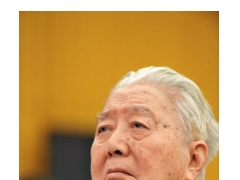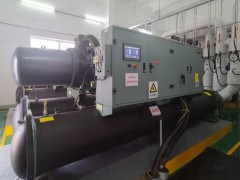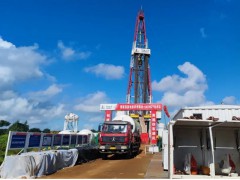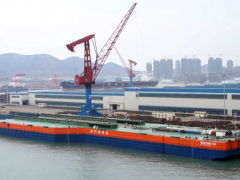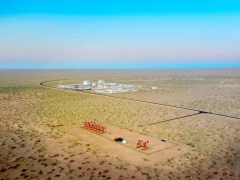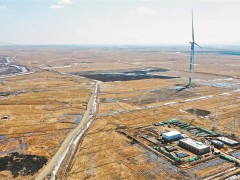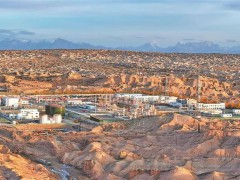据油价网5月28日报道,最近几周,由于发电和工业对天然气的需求疲软,导致欧洲天然气价格大幅下降,欧洲贸易商和行业人士不排除今年夏天欧洲一些市场的天然气价格可能会短暂跌至零以下的可能性。
暖冬结束时充足的库存、稳定的液化天然气进口以及疲软的需求,导致欧洲基准天然气价格连续8周下跌,这是6年多来最长的单周下跌。
在德国埃森举行的E-World能源博览会上,贸易商和行业人士告诉彭博社,虽然基准价格不太可能降至零以下,但如果需求持续疲软,可再生能源发电量保持高位,今年夏天欧洲一些地区的天然气价格可能会短暂低于零。
挪威能源巨头Equinor负责天然气交易和优化的副总裁Peder Bjorland在接受彭博社采访时表示,“当你拥有可再生能源生产时,欧洲个别地区的天然气市场可能会出现负值;从我们现在看到的价格水平到个位数和负值还有相当大的距离,这条路上可能会发生很多事情”。
欧洲天然气交易基准TTF中心的即月期货周四暴跌10%,收于每兆瓦时26.78美元(24.94欧元),这是自2021年秋季能源危机开始以来的最低价格。
欧洲天然气价格的价格趋势与去年形成了鲜明对比。去年8月,由于削减了管道供应,政府和行业对冬季潜在的天然气短缺感到恐慌,基准价格飙升至每兆瓦时322美元(300欧元)。
由于冬季天气温和,欧盟层面的消费减少,以及高能源成本对工业的需求破坏,欧洲度过了2022/2023年的冬天,没有出现天然气短缺或天然气限购。
每年这个时候的天然气库存都很高。根据欧洲天然气基础设施公司的数据显示,到5月24日,欧盟的天然气储存点66.71%已满。目前天然气储存水平是至少十年来年均最高水平。
分析师告诉彭博社,欧洲最早可能在9月填满库存,远远早于冬季。
冬季供暖季结束、夏季电力需求高峰尚未到来之前,目前欧洲的天然气需求现在很疲软。去年秋冬两季经历了非常艰难时期的工业天然气消费也很疲软。
据分析师表示,尽管天然气价格下跌,但工业燃料消耗量并没有上升,尽管大型工业能源消费者可能会等待天然气价格的进一步下跌。
高盛(Goldman Sachs)本周早些时候表示,随着更多发电厂可能从煤炭转向天然气,价格进一步下跌可能会让价格慢慢企稳。
高盛分析师在彭博社的一份报告中写道,在工业需求和亚洲液化天然气进口开始明显改善之前,这一替代过程可以作为天然气价格的临时下限,“在我们看来,这最终将使天然气价格在夏末走高”。
欧洲天然气价格的近期前景看起来很悲观。但如果夏季热浪带来的低风速可能会削弱风力发电,那么需求可能会迅速转变。如果价格继续下跌,工业客户也可能开始使用更多的天然气,最终支撑价格。亚洲对液化天然气需求的复苏也可能导致欧洲价格上涨,因为欧洲将不得不与亚洲竞争现货货物。
郝芬 译自 油价网
原文如下:
Natural Gas Prices Could Fall Below Zero In Parts Of Europe
As tepid demand for gas from power generation and industry has sent European natural gas prices into a freefall in recent weeks, traders and industry officials are not ruling out the possibility that Europe may see a brief dip to below zero for day-ahead prices in some markets this summer.
The combination of ample inventories at the end of a mild winter, steady imports of LNG, and weak demand has led to eight consecutive weeks of weekly losses in European benchmark natural gas prices, the longest weekly losing streak in more than six years.
While the benchmark price is unlikely to drop below zero, some regional day-ahead natural gas prices in Europe could see sub-zero prices briefly this summer, if demand remains weak and renewable power generation holds high, traders and industry officials at the E-World energy fair in Essen, Germany, told Bloomberg.
“Individual regional gas markets in Europe could go negative when you have hours and days with renewable production,” Peder Bjorland, vice president for gas trading and optimization at Norway’s energy giant Equinor, told Bloomberg.
“There is quite a big distance from the price level we see now and to the single-digit and negative prices, and a lot can happen on that route,” Bjorland added.
The front-month futures at the TTF hub, the benchmark for Europe’s gas trading, crashed by 10% on Thursday to settle at $26.78 (24.94 euros) per megawatt-hour (MWh), the lowest price since the start of the energy crisis in the autumn of 2021.
The price trend in European natural gas prices is in stark contrast with last year, when benchmark prices soared to as much as $322 (300 euros) per MWh in August, after it slashed supply via pipelines and governments and industry were spooked by potential gas shortages in the winter.
Thanks to milder winter weather, reduced consumption on EU level, and demand destruction in industry from the high energy costs, Europe made it through the 2022/2023 winter without gas shortages or gas rationing.
Currently, gas inventories are comfortably high for this time of the year. As of May 24, natural gas storage sites in the EU were 66.71% full, according to data from Gas Infrastructure Europe. The level of gas in storage is the highest for this time of the year in at least a decade.
Europe could fill up inventories as early as September, well ahead of the winter, analysts have told Bloomberg.
Demand for natural gas in Europe is now weak after the winter heating season ended and peak summer power demand is yet to begin. Gas consumption from industry, which went through a very rough patch last autumn and winter, is also weak.
Despite falling gas prices, industrial consumption of the fuel is not taking off, although it is possible that large industrial energy consumers wait for a further drop in gas prices, analysts say.
Further price declines could put a floor under prices as more power plants could switch to gas from coal, Goldman Sachs said earlier this week.
“This substitution process can work as a temporary floor to gas prices until industrial demand and Asia LNG imports start to improve more visibly, which in our view will ultimately pull gas prices higher into late-summer,” Goldman’s analysts wrote in a note carried by Bloomberg.
The near-term outlook on natural gas prices in Europe looks bearish. But things could swiftly turn if demand spikes in summer heatwaves with low wind speeds that could cripple wind power generation. Industrial customers could also start using more gas if prices continue to fall, ultimately supporting the prices. A recovery in Asian demand for LNG could also result in higher European prices as Europe will have to compete with Asia for spot cargoes.
免责声明:本网转载自其它媒体的文章及图片,目的在于弘扬石化精神,传递更多石化信息,宣传国家石化产业政策,展示国家石化产业形象,参与国际石化产业舆论竞争,提高国际石化产业话语权,并不代表本网赞同其观点和对其真实性负责,在此我们谨向原作者和原媒体致以崇高敬意。如果您认为本站文章及图片侵犯了您的版权,请与我们联系,我们将第一时间删除。












